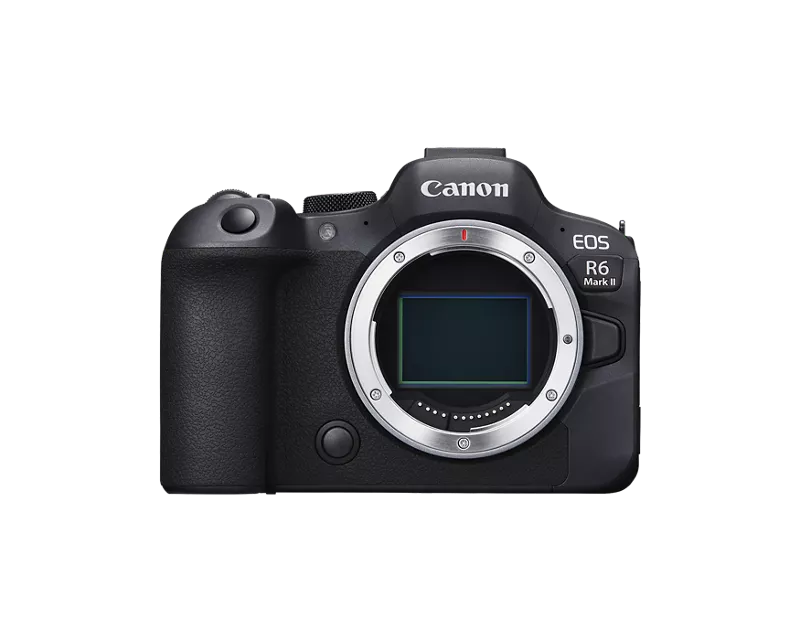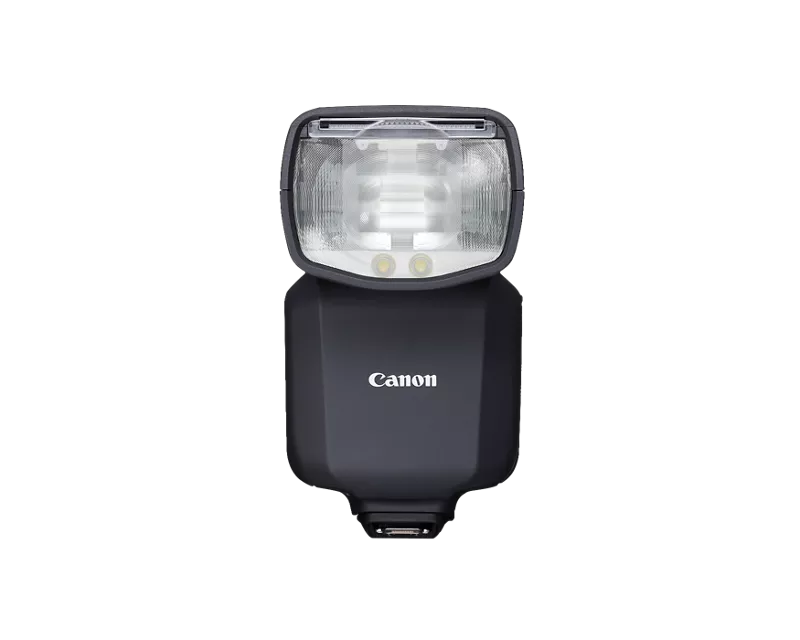- Canon Community
- Discussions & Help
- Camera
- Speedlite Flashes
- Why 600EX II RT / ST-E3-RT Drops Wireless Link
- Subscribe to RSS Feed
- Mark Topic as New
- Mark Topic as Read
- Float this Topic for Current User
- Bookmark
- Subscribe
- Mute
- Printer Friendly Page
Why 600EX II RT / ST-E3-RT Drops Wireless Link
- Mark as New
- Bookmark
- Subscribe
- Mute
- Subscribe to RSS Feed
- Permalink
- Report Inappropriate Content
12-13-2023 10:43 PM - edited 12-14-2023 04:55 PM
I am posting this information in hopes it is easier to find. It was originally a reply to an earlier post but may not be easily discovered.
I believe I have proven the theory that the Canon ST-E3-RT (ver. 2) / 600EX II RT wireless system is dropping wireless links because of external electromagnetic interference. As I mentioned in an earlier post I ran a number of tests yesterday with the ST-E3-RT sender and three 600EX II RT flashes, trying different channels and ID's. This testing was done in my home office not far from my Wi-Fi router. This home office has a single router and the normal complement of connected wireless devices (a couple of TVs, an Echo Show, one Samsung and one Apple cell phone). In this environment I experienced drops in less than a minute to at most 12 minutes. Some channel/ID combinations were better than others.
This morning I conducted a similar test on the same units. This time, I created a Faraday cage of sorts by placing all units (sender and Flashes) in a metal filing cabinet in my garage. This was in hopes of shielding them from most of whatever electromagnetic interference I have in my home office.
They ran flawlessly for over an hour before the flashes powered down as they were set to do. I then cycled the power on the remote, the three flashes woke up and reconnected and flashed when the test button was pressed. It's been over 30 minutes since the system was powered back up and still no drops. Each flash is in its own group; A, B, and C. A & B are in ETTL mode, and C is in manual mode at 1/128 power.
I believe this series of tests and the experiences that many of you have shared on this forum proves that the Canon flash system is unreliable where low to moderate electromagnetic interference exists. The system appears to be unsuitable for most venues in which it would likely be used where Wi-Fi and cell phones are in the vicinity.
This is an old design, but it's still being sold by Canon. The ST-E3-RT (ver. 2) was introduced a year or so ago and the EL1 & EL5, which use the same wireless protocol and have been reported to also have the same issues, were also introduced a little over a year ago.
Now the question is, how do we get this information and test results in front of Canon so something might be done about this issue. At the very least they should stop selling this system until the problem is resolved in current production units. It's simply an unreliable system for real-world applications.
PS: As I post this note, it's now been 1 hour and 55 minutes, with no dropped links.
PPS: The flashes went through another auto power off as programmed and were again powered up when the ST-E3-RT was power cycled. Their wireless links restored as expected. I concluded the test after 3-1/2 hours with no dropped wireless links. I then removed the units from the Faraday cage (metal filing cabinet) and returned them to my office where they all lost their links in less than 5 minutes. Again, this points to external interference as the cause in a fairly common home Wi-Fi environment. This system appears not suited for its intended wireless use.
- Mark as New
- Bookmark
- Subscribe
- Mute
- Subscribe to RSS Feed
- Permalink
- Report Inappropriate Content
02-19-2024 01:40 PM - edited 02-19-2024 01:47 PM
I see that Canon just announced the ST-E3-RT (Ver.3) trigger. Looks almost identical to the Ver.2 but claims to be new and improved. I sure hope it works better than the current triggers when it comes to link connectivity/interference issues. It's supposed to be available late next month so we should start seeing reports as to how well it works compared to the Ver.2 et al.
For details see: Shop Canon Speedlite Transmitter ST-E3-RT (Ver.3) | Canon U.S.A., Inc.
- Mark as New
- Bookmark
- Subscribe
- Mute
- Subscribe to RSS Feed
- Permalink
- Report Inappropriate Content
02-19-2024 01:50 PM
May be worthwhile to rent the v3 unit. Places such as lensrentals do carry the v1 and v2 units and I suspect they'll carry v3. Could be a good experiement to do before paying for v3 outright.
Ricky
Camera: EOS R5 II, RF 50mm f/1.2L, RF 135mm f/1.8L
Lighting: Profoto Lights & Modifiers
- Mark as New
- Bookmark
- Subscribe
- Mute
- Subscribe to RSS Feed
- Permalink
- Report Inappropriate Content
02-19-2024 03:25 PM
I took a look at the Canon website and I doubt that the STE 3 V3 can fix the link issue on its own without a change to the flash firmware itself. Even then, it would be hard to retain backward compatibility, I believe.
Looking at the minimal specs, which looks like the old specs, my assumption is the new unit mainly helps compatibility with the EL1 and EL5 new features and also gives those frustrated by the lack of any useful information display or controls on the STE10 trigger the old LCD window to look at and the relatively rapid buttons and dial on the STE3. When I did my EL5 + STE10 experiments, posted on this thread, I found that it was arduous to need to dig through the multiple menu levels to make flash setting changes.
Anyways, I may be wrong, and Canon will never admit the above, I am sure, but this is my best guess. I would definitely make sure you can return it when it doesn't work if you get the STE3 v3.
- Mark as New
- Bookmark
- Subscribe
- Mute
- Subscribe to RSS Feed
- Permalink
- Report Inappropriate Content
02-19-2024 04:10 PM - edited 02-19-2024 04:13 PM
Since users are reporting the same issues with the EL1 and EL5 flashes when used as masters or slaves and when used with the ST-E3-RT (Ver.2), you'd think Canon would be looking to fix or improve the link stability issues with this new version. I recall the link stability problem has been reported with the newer Canon ST-E10 trigger too. It seems the problem is related to the communications protocol implemented in the Canon RT system. So, time will tell if this new ST-E3-RT (Ver.3) trigger is a step forward toward resolving this issue.
Right now, I remain skeptical as do you, but we should have an answer in the next month or so. If the link dropping problem continues with Ver.3, we will have our answer...it will be time to move on to another system.
- Mark as New
- Bookmark
- Subscribe
- Mute
- Subscribe to RSS Feed
- Permalink
- Report Inappropriate Content
09-06-2024 02:46 PM
Same problem. My EL-1, EL-5, 600EX II-RT's, ST-E10, ST-E3-RT Ver 1, ST-E3-RT, R5's R5 Mark II's in every combination experience a drop between the sender and the receiver within a few seconds to minutes when in most wedding venues. Maddening.
- Mark as New
- Bookmark
- Subscribe
- Mute
- Subscribe to RSS Feed
- Permalink
- Report Inappropriate Content
09-06-2024 03:39 PM
Most of your affected products are new and still offered for sale by Canon while this issue has been known and reported by many customers for years. Up until now, Canon has yet to admit there is an issue with their RT flash system, offer an update, or provide a plausible explanation for the issue.
Shameful!!
- Mark as New
- Bookmark
- Subscribe
- Mute
- Subscribe to RSS Feed
- Permalink
- Report Inappropriate Content
09-06-2024 05:23 PM
I ended up getting some Godox triggers for each of my three 600ex flashes and use the Godox controller. Works well and prevented me from needing to replace all my speedlites with Godox or Westcott.
My experience and experiments show there is no way to make the Canon wireless link reliable unless you move to a place with no WiFi.
- Mark as New
- Bookmark
- Subscribe
- Mute
- Subscribe to RSS Feed
- Permalink
- Report Inappropriate Content
09-06-2024 05:37 PM
This is exactly what I did, and the system works well this way. It's a kludge but I was able to preserve some of my Canon flash investment. I plan to move away from Canon for my future flash needs. There are a lot of options out there now, for both flash and camera systems from which to choose.
- Mark as New
- Bookmark
- Subscribe
- Mute
- Subscribe to RSS Feed
- Permalink
- Report Inappropriate Content
09-11-2024 07:55 PM - edited 09-11-2024 07:57 PM
Here is a great write-up about one photographer's experience with the RT flash system wireless connection issues documented in the many posts here in the Canon Support Community forum:
When will Canon acknowledge this issue?
- Mark as New
- Bookmark
- Subscribe
- Mute
- Subscribe to RSS Feed
- Permalink
- Report Inappropriate Content
10-20-2024 06:04 PM
Here is an interesting YouTube video that compares the Canon 600EX II RT flash to an equivalent Godox flash V860III. It also mentions the wireless link dropping issues seen with the RT system and how the Godox system performed in similar environments. Yet more evidence the Canon RT flash system is not performing as expected where other brands seem to do OK.
12/18/2025: New firmware updates are available.
12/15/2025: New firmware update available for EOS C50 - Version 1.0.1.1
11/20/2025: New firmware updates are available.
EOS R5 Mark II - Version 1.2.0
PowerShot G7 X Mark III - Version 1.4.0
PowerShot SX740 HS - Version 1.0.2
10/21/2025: Service Notice: To Users of the Compact Digital Camera PowerShot V1
10/15/2025: New firmware updates are available.
Speedlite EL-5 - Version 1.2.0
Speedlite EL-1 - Version 1.1.0
Speedlite Transmitter ST-E10 - Version 1.2.0
07/28/2025: Notice of Free Repair Service for the Mirrorless Camera EOS R50 (Black)
7/17/2025: New firmware updates are available.
05/21/2025: New firmware update available for EOS C500 Mark II - Version 1.1.5.1
02/20/2025: New firmware updates are available.
RF70-200mm F2.8 L IS USM Z - Version 1.0.6
RF24-105mm F2.8 L IS USM Z - Version 1.0.9
RF100-300mm F2.8 L IS USM - Version 1.0.8
Canon U.S.A Inc. All Rights Reserved. Reproduction in whole or part without permission is prohibited.



